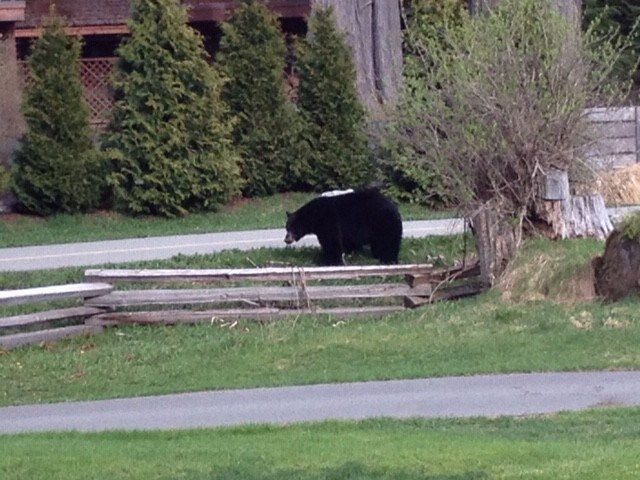From bears popping up in Peru's Machu Picchu to wildlife using empty city streets to travel, the global economic slowdown has led to human beings seeing wildlife in places like never before.
Similar unusual sightings have been reported across Canada in recent weeks.
However, the Nature Conservancy of Canada (NCC) believes it has more to do with the fact we're being forced to stay at home and slow our lives down to a pace where our eyes are opened to the sights around us, than to wildlife getting bolder.
NCC scientist Dan Kraus said in our daily travels and busy lives, most of the wildlife has been there all along, waiting for us to notice and discover it.
"Because of how COVID-19 has forced many of us to slow down and stay home, many people are more tuned in to what nature is around us-we might be noticing the birds and other creatures that live around us more because we are less distracted compared to our usual routines," said Kraus.
A senior conservation biologist with the national land conservation group, he said there are several reasons why there seems to be more animal sightings lately.
One is that some wildlife is taking advantage of empty spaces, while people spend most of their time in their homes.
"The quieter environment certainly means that we also hear more birds, and animals that avoided people by mostly coming out at night maybe extending the hours that they are active," explained Kraus.
He pointed out it is also a matter of seasonal timing. Spring is, of course, when the natural world starts to get busy with growth and reproduction. Migratory birds start returning or passing through our neighbourhoods.
"Animals of all sorts are moving about more looking for a mate or building a nest or den," said Kraus.
"So this slowdown of human society is happening right when the rest of nature is waking up and getting active. There's a lot happening for any of us to notice, if we only pay attention."
Kraus pointed out it's not even that unusual to have wildlife like bears or moose occasionally wander into cities in the spring (usually young males).
Wildlife also come into our cities because of cleaner air and water and because we have more habitat in our urban areas than in the past.
"The majority of Canadians live in a place that historically had very high biodiversity," said Kraus. "Some of the diversity is coming back thanks to conservation efforts and because wildlife is adapting."
Kraus hopes these wildlife observations will give families a greater appreciation of nature and interest in the species that share our areas.
To help people get their nature fix while being indoors, NCC has posted a series of activities on its website.
They include a five-minute daily nature challenge, crossword puzzles, colouring sheets and videos offering virtual hikes and walks of various Nature Conservancy properties in all 10 provinces.
To read original story go here.




